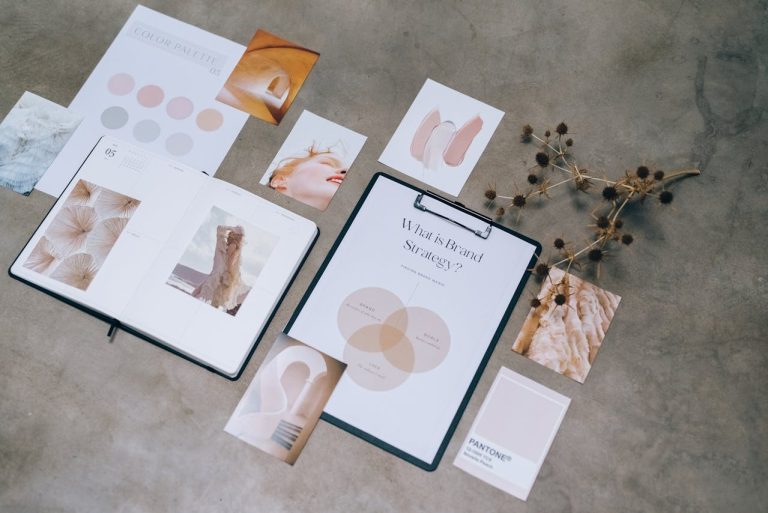

If you’re selling an online course, you can’t rely on a single landing page and hope for conversions. People rarely buy the first time they hear about something new. That’s where a sales funnel comes in. It’s a structured path that guides potential students from first hearing about your course to enrolling in it. Without one, you’re leaving conversions—and revenue—on the table.
Let’s break down what a sales funnel actually is, how it works for course creators, and how to build one that fits your audience and offer.
Understanding the sales funnel stages
A sales funnel maps the journey a potential customer takes from awareness to purchase. Most funnels follow a version of this four-stage model:
- Awareness: Someone discovers your course through a blog post, ad, podcast, or social media.
- Interest: They visit your site, sign up for a freebie, or watch a webinar.
- Decision: They compare your course to others, read reviews, or check your credentials.
- Action: They enroll, pay, and become a student.
For example, if you’re teaching a course on freelance writing, your funnel might start with a blog post titled “How to Land Your First Writing Client.” That post leads to a free downloadable pitch template, which requires an email address. Once someone downloads it, they enter an email sequence that introduces your course, shares testimonials, and offers a limited-time discount.
Each step in the funnel builds trust and moves the person closer to buying.
Why your course needs a funnel
Selling a course is different from selling a product. Courses require a higher level of trust and commitment. A funnel helps you:
- Educate before you sell: People need to understand the value of your course before they’ll pay for it.
- Build authority: Sharing useful content early in the funnel positions you as someone worth learning from.
- Nurture leads over time: Not everyone is ready to buy right away. A funnel keeps you top of mind.
Without a funnel, you’re relying on impulse buys. That’s not a strategy you can scale.
Building a course-specific funnel
Start by mapping your funnel backward from the point of sale. Ask:
- What does someone need to believe or understand before buying?
- What objections might they have?
- What kind of free content would attract the right people?
Here’s a simple funnel structure for a course on Excel for small business owners:
- Top of funnel: A YouTube video titled “3 Excel Formulas Every Small Business Owner Should Know”
- Lead magnet: A free Excel cheat sheet in exchange for an email
- Email sequence: Five emails that teach mini-lessons, share use cases, and introduce the course
- Call to action: A limited-time offer with a bonus template pack
You don’t need complex automations to get started. A basic email tool and a clear content path are enough.
Once your funnel is in place, you’ll spend less time convincing people to buy and more time teaching those who already said yes.
Phase 1: Pre-Funnel Prep – Laying the Foundation
Before any lead enters your funnel, you need a solid foundation. Pre-funnel prep is where strategy meets structure. It’s not just about setting up tools—it’s about aligning your team, defining your audience, and building the assets that will support every stage of your funnel. Skip this step, and you’ll waste time chasing the wrong leads or sending mixed messages.
This phase covers three key areas: defining your ideal customer profile, aligning marketing and sales, and building the content and data infrastructure that powers the funnel.
Define your ideal customer profile (ICP) with precision
An ideal customer profile isn’t a vague persona—it’s a detailed description of the companies most likely to buy, stay, and grow with you. Start with your best customers. Look at:
- Industry and company size
- Annual revenue and budget range
- Tech stack and maturity
- Buying committee structure
- Common pain points and use cases
Use both qualitative input from sales and quantitative data from your CRM. For example, if 80% of your long-term customers are mid-market SaaS companies using HubSpot and Stripe, that’s a signal. Don’t chase enterprise leads just because they look impressive.
Once defined, document your ICP in a shared format. Include firmographic filters, red flags, and sample messaging. This keeps marketing from targeting the wrong accounts and helps sales prioritize outreach.
Align marketing and sales around shared definitions
Misalignment between marketing and sales starts early. Avoid it by agreeing on key definitions before launching any campaigns:
- What counts as a marketing qualified lead (MQL)?
- When does a lead become a sales qualified lead (SQL)?
- What’s the handoff process between teams?
Build a service-level agreement (SLA) that spells out these terms. For example, marketing commits to delivering 100 MQLs per month that meet ICP criteria, and sales agrees to follow up within 24 hours.
Use tools like Slack channels or shared dashboards to keep both teams in sync. If marketing sees that sales isn’t following up, or sales sees low-quality leads, you can address the issue before it snowballs.
Build the content and data infrastructure
Pre-funnel content isn’t about pitching your product. It’s about attracting the right people and giving them a reason to engage. Focus on:
- Educational blog posts tied to ICP pain points
- Comparison guides that show how your category stacks up
- Interactive tools like ROI calculators or maturity assessments
Pair this with clean data. Audit your CRM to remove duplicates, standardize fields, and enrich records with firmographic data. Tools like ZoomInfo, Clearbit, or Apollo can help fill in the gaps.
Also, set up lead scoring rules that reflect your ICP and buyer intent. For instance, assign higher scores to leads from target industries who visit pricing pages or attend webinars.
With your ICP defined, teams aligned, and assets in place, you’re ready to move into demand creation with confidence.
Phase 2: Building Your 5-Stage Online Course Sales Funnel
Once your course content is mapped out, it’s time to build the engine that drives sales: your funnel. A sales funnel guides potential customers from first contact to final purchase, using a series of intentional steps. For online courses, a five-stage funnel works well because it mirrors how people research, evaluate, and commit to learning.
This phase is about structuring those steps so they align with how your audience thinks and buys. Below, we’ll break down each stage, show how they connect, and offer practical ways to build them out.
Stage 1: Attract with targeted content
The top of your funnel should pull in people who are actively searching for solutions or learning opportunities. This isn’t about going broad—it’s about being specific and relevant.
Tactics to use:
- Create blog posts that answer high-intent search queries. For example, if your course teaches email marketing, write posts like “How to build a welcome email sequence that converts.”
- Use short-form video (YouTube Shorts, Instagram Reels) to preview course topics. Keep them instructional, not promotional.
- Run targeted ads to lead magnets like checklists or templates. These should tie directly to your course topic.
Best practice: Make sure every piece of content links to a lead capture page. Don’t rely on people to “find their way” to your course.
Stage 2: Capture leads with a strong opt-in
Once you’ve attracted attention, the goal is to collect email addresses so you can nurture interest over time. This is where a lead magnet comes in.
Effective lead magnet formats:
- A short PDF guide (3–5 pages) that solves one specific problem
- A free mini-course or email challenge
- A quiz that gives personalized results tied to your course topic
Example: If your course teaches personal finance for freelancers, offer a “Freelancer Budget Template” in exchange for an email.
Best practice: Keep the opt-in form simple. First name and email are enough. Add a clear headline like “Get the free budget template for freelancers.”
Stage 3: Nurture with automated email
Now that you have their email, guide them toward your course with a short email sequence. This is where you build trust and show the value of what you teach.
Recommended sequence:
- Welcome email: Deliver the lead magnet and introduce yourself.
- Problem email: Describe a common challenge your audience faces.
- Solution email: Show how your course addresses that challenge.
- Social proof email: Share a student story or testimonial.
- Offer email: Present the course with a limited-time bonus or discount.
Best practice: Space emails 1–2 days apart. Use plain language and keep the tone helpful, not salesy.
Stage 4: Convert with a focused sales page
When someone clicks to learn more, your sales page needs to do the heavy lifting. It should answer objections, highlight benefits, and make the next step obvious.
Key elements to include:
- A clear headline that speaks to the outcome (e.g. “Learn to write emails that sell—without sounding pushy”)
- Short video or text explaining who the course is for
- Module breakdown with bullet points
- Testimonials or screenshots from past students
- Pricing options and a clear call-to-action button
Best practice: Remove distractions. No navigation links, sidebars, or unrelated offers. Keep the focus on the course.
Stage 5: Follow up and re-engage
Not everyone will buy right away. That’s normal. What matters is how you follow up.
Tactics to re-engage:
- Send a reminder email before the offer expires
- Use retargeting ads for people who visited the sales page but didn’t buy
- Add non-buyers to a long-term nurture list with occasional content and future offers
Example: After your initial launch, send a “What’s stopping you?” email asking for feedback. Use those responses to improve your funnel.
Best practice: Don’t over-email. One or two follow-ups after the offer ends is enough. Focus on building long-term trust.
Once your five-stage funnel is in place, you’ll have a repeatable system that brings in leads, builds trust, and converts attention into course sales. Next, we’ll look at how to test and optimize each stage for better performance.
The Secret Ingredients of a High-Converting Funnel
A high-converting funnel isn’t just a series of pages stitched together with a call to action. It’s a carefully constructed journey that guides prospects from curiosity to commitment. The best funnels anticipate objections, build trust at every step, and make it easy for the right buyers to say yes.
Let’s break down the key elements that separate high-performing funnels from those that leak leads and stall conversions.
Clear, specific messaging at every stage
Each stage of your funnel—awareness, consideration, and decision—needs its own tailored message. Generic copy like “We help you grow” doesn’t cut it. Buyers want to know how you help, who you help, and why they should care.
Here’s what to focus on:
- Top of funnel (TOFU): Speak to the problem, not your product. For example, instead of “Try our CRM,” lead with “Struggling to keep track of leads across spreadsheets?”
- Middle of funnel (MOFU): Introduce your product as a solution, but anchor it in outcomes. “Teams using our CRM close deals 27% faster” is more compelling than “Our CRM has great features.”
- Bottom of funnel (BOFU): Reinforce trust. Use testimonials, case studies, and data to help prospects justify the decision.
Keep your language plain and direct. Avoid buzzwords. If a sentence doesn’t add clarity or confidence, cut it.
Frictionless user experience
Even the best messaging won’t convert if the experience is clunky. Every click, scroll, and form field is a chance to lose someone.
Reduce friction by:
- Minimizing form fields: Ask only for what you need. A name and email are usually enough to start.
- Speeding up load times: A delay of just one second can drop conversions by 7%. Compress images, streamline scripts, and test on mobile.
- Clear CTAs: Use one call to action per page. Make it specific (“Book a 15-minute demo”) and place it above the fold.
A good test: watch someone unfamiliar with your funnel go through it. Where do they pause? Where do they hesitate? That’s where you’re losing people.
Proof and urgency that feel natural
Social proof and urgency are powerful, but they backfire when overdone. “Only 3 spots left!” feels fake if you say it every week.
Use proof and urgency that align with your brand:
- Customer quotes: Place short, specific testimonials near CTAs. “We reduced onboarding time by 40%” is more persuasive than “We love this tool.”
- Live data: Show how many people are using your product or signed up this week.
- Time-sensitive offers: Tie urgency to real events, like a quarterly pricing change or limited-time onboarding support.
Avoid fake scarcity. If your offer’s always available, don’t pretend it’s not. Buyers can tell.
When your funnel combines clarity, ease, and trust, conversions follow. Next, we’ll look at how to diagnose where your funnel is leaking and what to fix first.
Introducing DeadlineFunnel: Add Authentic Urgency to Your Funnel
Urgency works—when it’s real. But fake countdown timers and arbitrary deadlines can backfire fast. That’s where DeadlineFunnel comes in. It helps marketers add authentic, behavior-based urgency to their funnels without resorting to gimmicks. Whether you’re running evergreen webinars, email sequences, or product launches, DeadlineFunnel keeps your deadlines honest and effective.
Here’s how it works, where it fits, and how to use it well.
How DeadlineFunnel creates real urgency
DeadlineFunnel tracks each lead individually, assigning a deadline based on when they enter your funnel. This means no more “one-size-fits-all” timers. Instead, every subscriber sees a deadline that’s real for them—and when the timer hits zero, the offer actually expires.
It integrates with your email platform (like ConvertKit, ActiveCampaign, or HubSpot) and your website or landing page. Once set up, it syncs the deadline across all touchpoints: emails, pages, and pop-ups. If someone tries to revisit the offer after their deadline, they’ll see an expired page or a different offer—whatever you configure.
This approach avoids the trust-breaking mistake of showing a countdown that resets every time someone clears their cookies or switches browsers.
Where to use DeadlineFunnel in your funnel
You can use DeadlineFunnel across multiple funnel types. Three popular use cases:
- Evergreen email sequences: Add a real deadline to a time-limited offer at the end of your welcome or nurture sequence.
- Webinar replays: Give attendees 48 hours to watch a replay and access a bonus before it disappears.
- Tripwire offers: Show new subscribers a discounted product for 15 minutes after they opt in.
For example, if someone signs up for your lead magnet on Monday, they might get a 72-hour bonus offer that expires Thursday. Another person who signs up Friday sees the same offer, but their deadline is Sunday. Each person gets the same experience, but the urgency is personalized and real.
Best practices for using DeadlineFunnel effectively
To make the most of DeadlineFunnel, focus on clarity and consistency:
- Be transparent: Let people know the deadline is real and based on when they joined. You don’t need to overexplain, but a simple note like “This offer expires 72 hours after you joined” builds trust.
- Use multiple reminders: Send at least two emails on the final day. One in the morning, another a few hours before the deadline.
- Match the message across channels: If your email says “Offer expires in 3 hours,” your landing page should reflect that. DeadlineFunnel handles this syncing, but your copy still needs to align.
Avoid the temptation to reset or extend deadlines manually. That breaks trust and trains your audience to wait for the next “extension.”
Used well, DeadlineFunnel turns urgency into a trust-building tool, not a gimmick. Next, we’ll look at how to connect it with your email platform for a smooth setup.
A Visual Map of Your Online Course Sales Funnel
Before you can optimize your sales funnel, you need to see it. Mapping your funnel gives you a clear picture of how leads move from discovery to purchase—and where they drop off. It also helps you spot gaps, test assumptions, and prioritize improvements. This section breaks down how to create a visual map of your online course sales funnel, from top to bottom, with examples of what to include at each stage.
Define each stage of the funnel
Start by outlining the major stages your audience moves through. For most online course businesses, the funnel looks something like this:
- Awareness: A potential customer discovers you through content, ads, or referrals.
- Interest: They engage with your brand—visiting your site, reading a blog post, or signing up for a lead magnet.
- Consideration: They explore your course details, pricing, testimonials, or attend a webinar.
- Decision: They buy—or don’t.
Label these stages clearly in your visual map. Use arrows to show how traffic flows between them. If you use tools like Funnelytics, Lucidchart, or Miro, you can drag and drop each element and connect them with lines to show relationships.
Example: A visitor clicks a Facebook ad (Awareness), lands on a free mini-course signup page (Interest), receives a 3-email sequence (Consideration), and then clicks to view your course checkout page (Decision).
Add specific touchpoints and conversion events
Once the stages are clear, map the actual assets and actions that move people forward. These are your touchpoints: landing pages, emails, videos, CTAs, and more. For each one, ask:
- What’s the goal of this step?
- What’s the conversion event?
- What happens if they don’t convert?
Example touchpoints:
- Awareness: Instagram reel → Link in bio → Blog post
- Interest: Blog post → Inline CTA → Lead magnet opt-in
- Consideration: Email #2 → Webinar registration → Live Q&A
- Decision: Webinar replay email → Course sales page → Checkout
Include fallback paths too. If someone doesn’t register for your webinar, do they get a reminder? If they abandon checkout, do they get a follow-up email?
Use color coding or labels to show conversion rates if you have them. For example, if 30% of webinar attendees visit the checkout page, note that on the map.
Identify gaps and friction points
Now that your funnel is visualized, look for weak spots. These are usually where:
- Traffic drops off sharply
- Conversion rates are low
- Messaging is inconsistent
- There’s no clear next step
Example: If lots of people download your lead magnet but few attend your webinar, the email sequence may not be compelling—or the timing could be off.
Use your map to brainstorm fixes. Maybe you need a stronger CTA in email #1, or a shorter delay between opt-in and webinar invite. Small changes at high-traffic points often yield the biggest gains.
Once your map is complete, you’ll have a working blueprint to test, refine, and optimize. Next, we’ll look at how to measure performance at each stage.
How to Optimize Your Funnel: Test, Track, and Tweak
Optimizing your funnel isn’t a one-time project—it’s a continuous cycle of testing, tracking, and refining. Whether you’re targeting signups, demos, or purchases, small changes can lead to measurable gains. But to make those changes count, you need a structured approach. This section breaks down how to run meaningful experiments, measure what matters, and iterate with purpose.
Start with a clear hypothesis
Before you touch a landing page or email, define what you’re testing and why. A clear hypothesis helps you avoid random changes and focus on outcomes.
A strong hypothesis looks like this:
“If we shorten the signup form from five fields to two, we expect a 15% increase in conversion rate because users will face less friction.”
Avoid vague goals like “improve engagement.” Instead, tie your test to a specific metric: conversion rate, click-through rate, time on page, etc.
Best practices:
- Focus on one variable at a time (e.g., CTA copy, form length, headline).
- Use historical data to set realistic expectations for improvement.
- Document each test’s goal, setup, and expected outcome in a shared tracker.
Track the right metrics at each stage
Each part of your funnel has its own job. Don’t measure top-of-funnel success with bottom-of-funnel metrics. Align your tracking with the user’s intent at each step.
Examples:
- Top of funnel (TOFU): Track impressions, click-through rate (CTR), and bounce rate. These show if your messaging and targeting are working.
- Middle of funnel (MOFU): Measure engagement metrics like time on page, scroll depth, and form starts. These help you gauge interest.
- Bottom of funnel (BOFU): Focus on conversion rate, demo requests, or purchases. This is where you see if your funnel is driving action.
Use tools like Google Analytics, Mixpanel, or Heap to build event-based funnels. Set up custom events for key actions like “clicked CTA” or “completed signup.”
Tip: Don’t just track averages. Look at user segments—new vs. returning visitors, mobile vs. desktop—to spot hidden trends.
Iterate based on what the data tells you
Once you’ve run a test and collected results, resist the urge to jump to conclusions. Look at both quantitative and qualitative data to decide your next move.
Example:
You test a new demo request page and see a 10% drop in conversions. But heatmaps show users are confused by the new layout. That’s a signal to refine the design, not revert to the old version.
How to iterate effectively:
- Wait for statistical significance before declaring a winner.
- Use session recordings or surveys to understand why a test performed the way it did.
- Stack small wins. A 5% lift here and a 3% lift there compound over time.
Keep a changelog of what you’ve tested, what worked, and what didn’t. This prevents repeat mistakes and helps onboard new team members faster.
Once you’ve built a habit of testing, tracking, and tweaking, optimization becomes part of your workflow—not a side project. Next, we’ll look at how to scale what’s working across channels.
FAQ
This section covers common questions we hear from teams evaluating or implementing our platform. Whether you’re comparing tools, planning a rollout, or troubleshooting adoption, these answers provide practical guidance based on real customer scenarios.
How long does implementation typically take?
Implementation time depends on your tech stack, team size, and internal processes. That said, most mid-market teams go live in two to four weeks. Enterprise rollouts with multiple integrations and stakeholder groups can take six to eight weeks.
Here’s what that timeline usually looks like:
- Week 1–2: Kickoff, data mapping, and integration setup (e.g., connecting your CRM, analytics, or billing tools)
- Week 3–4: User testing, admin training, and feedback loops
- Week 5+ (for larger orgs): Department-specific configuration, security reviews, and change management support
To move faster, assign a dedicated internal project owner and align early on what “done” looks like. One fintech customer shaved two weeks off their timeline by front-loading data cleanup and giving their IT team sandbox access before kickoff.
What systems does it integrate with?
We support direct integrations with over 40 platforms, including:
- CRMs like Salesforce, HubSpot, and Zoho
- Analytics tools like Looker, Tableau, and Google Analytics
- Billing systems like Stripe, Recurly, and Chargebee
- Collaboration platforms like Slack, Microsoft Teams, and Notion
For anything outside of our native connectors, we offer a REST API and webhook support. One SaaS client used our API to sync usage data from their proprietary backend, then layered that into our reporting dashboard for account health scoring.
If you’re unsure whether your stack is supported, we recommend starting with a list of your top five tools. Our solutions team can map out integration options and flag any custom work upfront.
What kind of support is available post-launch?
After launch, customers get access to:
- A dedicated customer success manager (for Pro and Enterprise plans)
- Live chat and email support during business hours
- A searchable help center with setup guides, API docs, and troubleshooting steps
- Monthly product update webinars and feature walk-throughs
We also offer quarterly business reviews for accounts with over 50 users. These sessions are great for reviewing usage trends, surfacing adoption blockers, and planning roadmap alignment.
One B2B SaaS client used their QBR to identify a drop in feature usage among their support team. With help from their CSM, they ran a 30-minute refresher training and saw a 28% increase in engagement the following month.




